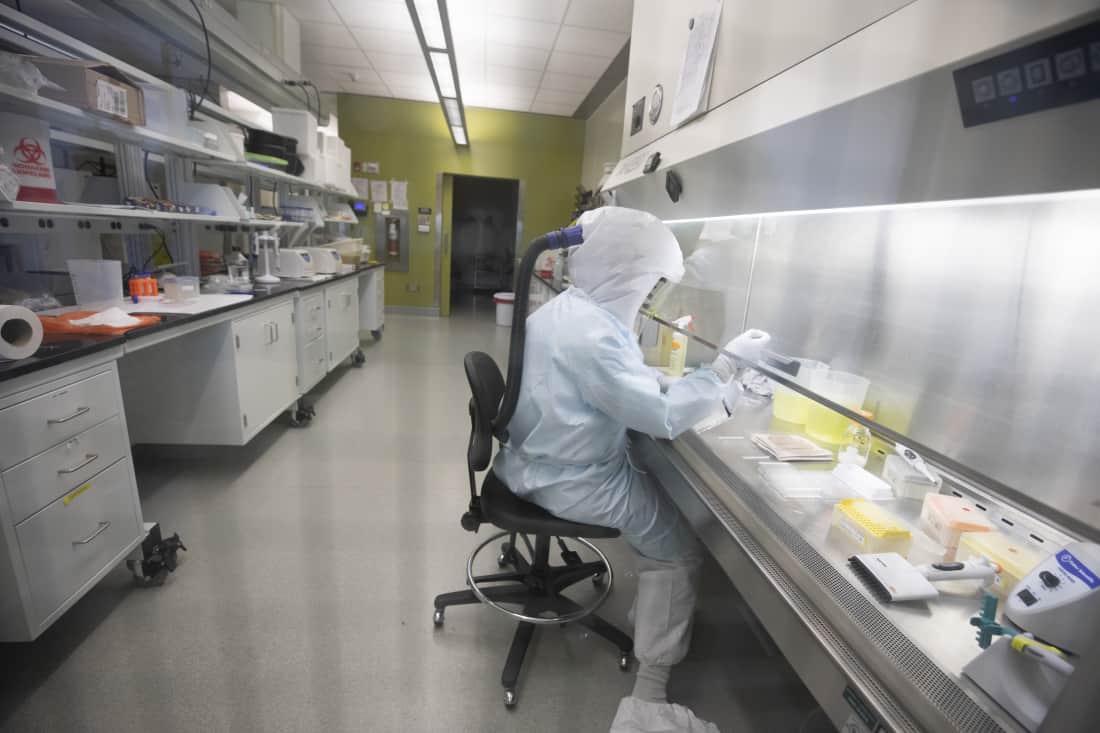
Researchers at the University of Saskatchewan are leading Canada’s fight against the coronavirus. With their SARS-CoV-2 vaccine currently in animal testing, the federal government is allocating $23 million to help support the next phases of clinical testing which includes a new manufacturing facility.
The Vaccine and Infectious Disease Organization-International Vaccine Centre is one of the world’s largest biosafety level 3 high-containment facilities constructed for research into emerging human and animal diseases.
The organization received approval to begin vaccine research in January and close to $1.2 million in research funding has been promised from the federal and Saskatchewan governments earlier this month.
Director and CEO of VIDO-InterVac, Volker Gerdts, says the organization’s extensive work with vaccines is helping researchers understand how coronaviruses function and what types of vaccines are needed to control them.
“VIDO-InterVac, overall, was exactly built for this purpose,” Gerdts said. “The organization has developed the first coronavirus vaccine for cattle, then a few years ago we developed a coronavirus vaccine for pigs.”
Currently, the prototype SARS-CoV-2 vaccine is in the early-stages of clinical safety testing in animal models. Afterwards, VIDO-InterVac will require time to ensure that the vaccine is safe through further human clinical testing before it can then be produced for the public.
The World Health Organization is connecting regulators from across the globe to help streamline vaccine development requirements. According to Gerdts, in a “best case scenario” a COVID-19 vaccine could be ready in 12 to 15 months.
On Monday morning, the federal government announced that of its $275 million plan for coronavirus research, $192 million is being designated to “quickly mobilize” Canadian vaccine development.
VIDO-InterVac will receive $11 million in funding from the Canada Foundation for Innovation to help with its vaccine development. And an additional $12 million from the department of Western Economic Diversification will be used to expand its bio-manufacturing capacity.
Gerdts says the $12 million will be used to construct a pilot-scale manufacturing facility within VIDO-InterVac’s high containment lab which will support the next phase of clinical trials.
“This facility will help fast track vaccine development and there’s a real shortage in the country’s capacity to manufacture vaccines in situations like this,” Gerdts said.
“It will enable clinical research, but then also during outbreaks like this one, the manufacturing facility can start making vaccines for Canadians.”
VIDO-InterVac estimates that it will be able to produce roughly 20 million doses when the facility is completed. It also means they will be better able to meet the supply demands of other human and animal vaccines in the future.
Gerdts has been working on emerging pathogens with VIDO-InterVac for over two decades and says there is more “urgency” when responding to a pandemic. The crisis has led to increased global collaboration and VIDO-InterVac takes part in weekly phone meetings organized by the WHO to share information about the virus.
“There’s the top 20 to 30 labs from around the world on these calls and we have updates from vaccine manufacturers on what kind of vaccines they are developing, so it’s really a continuous information exchange,” Gerdts said.
Because of how rapidly SARS-CoV-2 has been spreading worldwide, the rates indicate that there might be “second and third waves” and a vaccine would help prevent future infections.
While vaccines are an effective response to new disease outbreaks, Gerdts says VIDO-InterVac is focused on developing vaccines for these emerging pathogens. The challenge is predicting what the next disease will look like, but certain information gives researchers direction.
“The family of coronaviruses; they’re a good suspect for assuming that the next emerging pathogen is also going to be a coronavirus because if you look back, we’ve had SARS, MERS and now COVID-19 within 18 years,” Gertds said.
“So there’s families of viruses that may be more prone to cause these large outbreaks than others, and if you develop a vaccine that will protect against all of the pathogens in these groups, then you could potentially have something ready whenever the next disease occurs.”
—
Noah Callaghan | Staff Writer
Photo: David Stobbe / StobbePhoto.ca